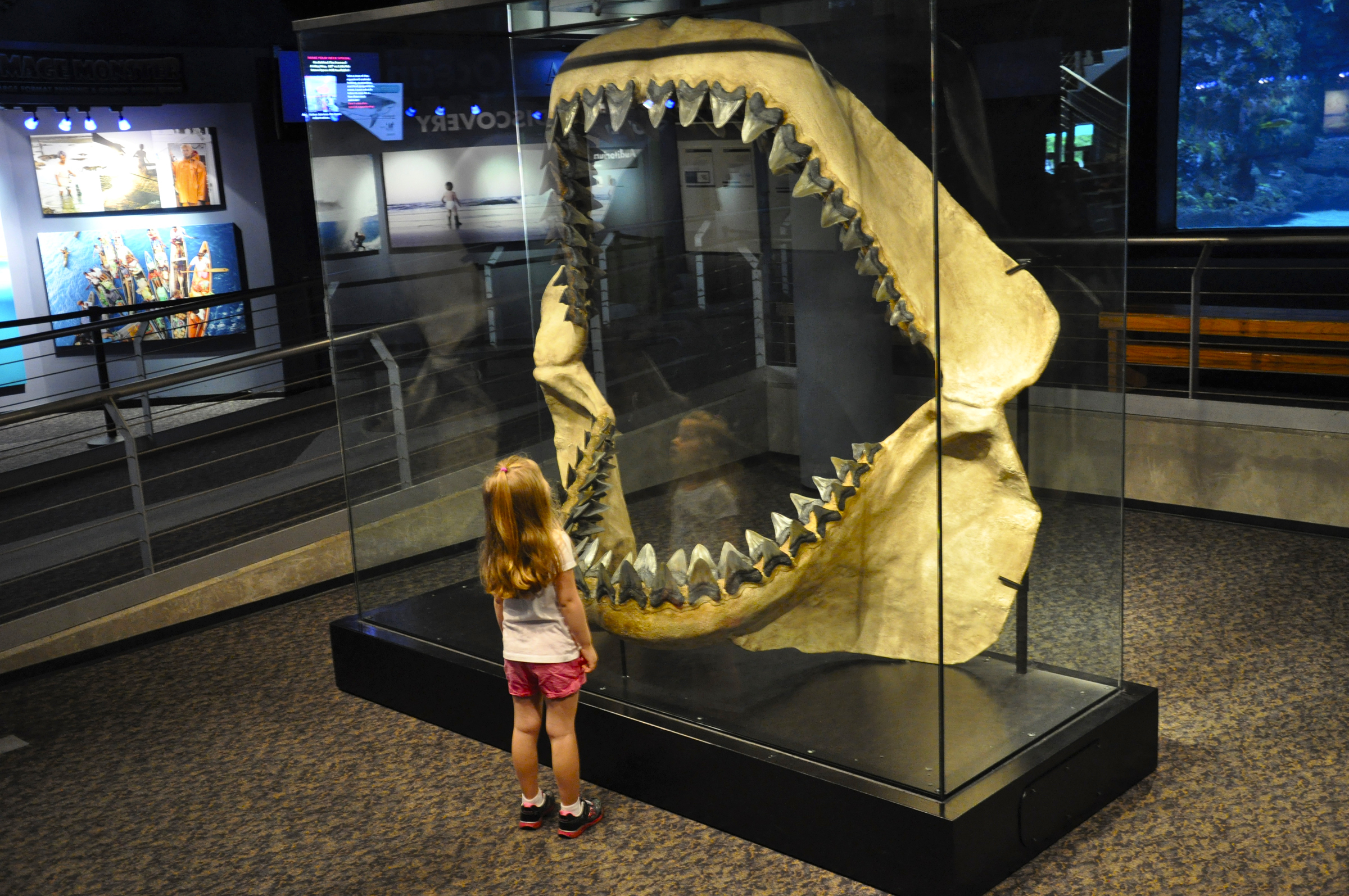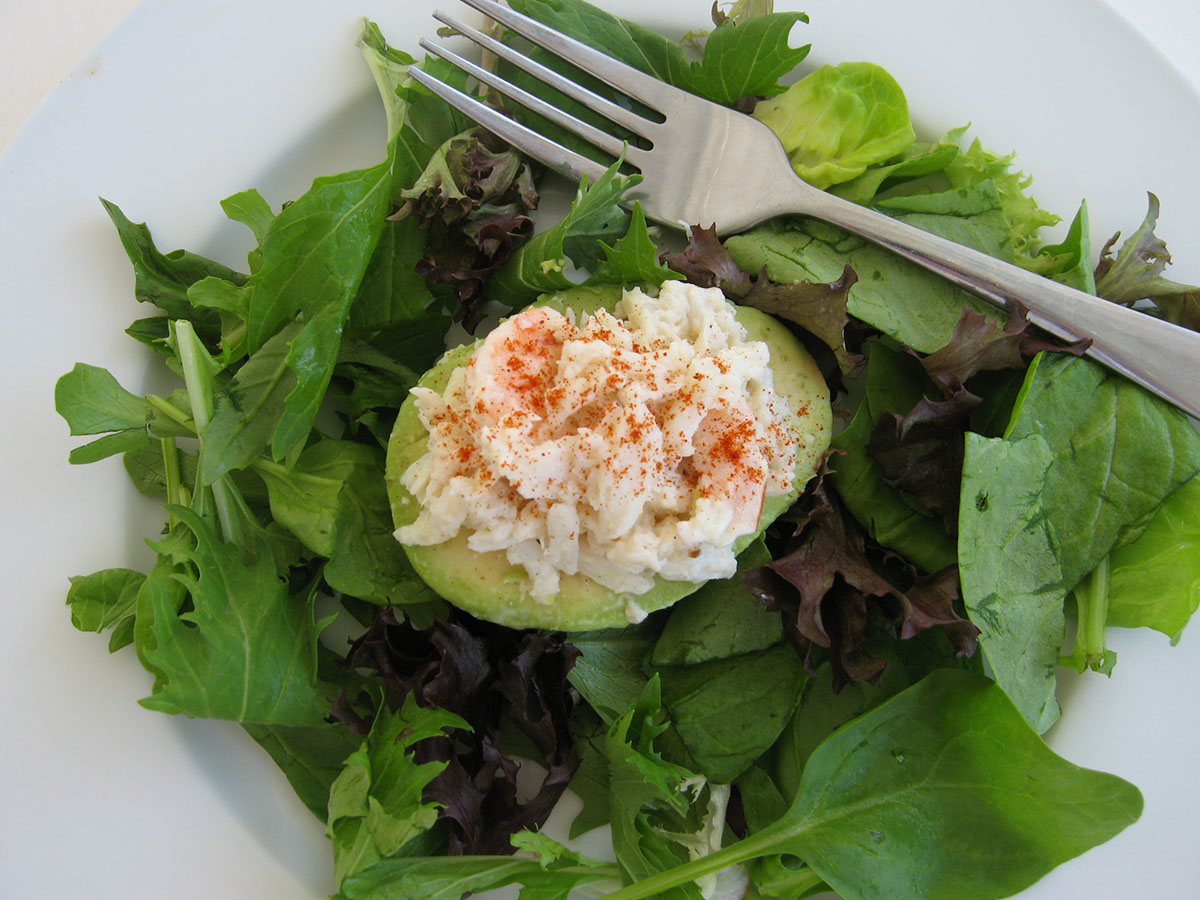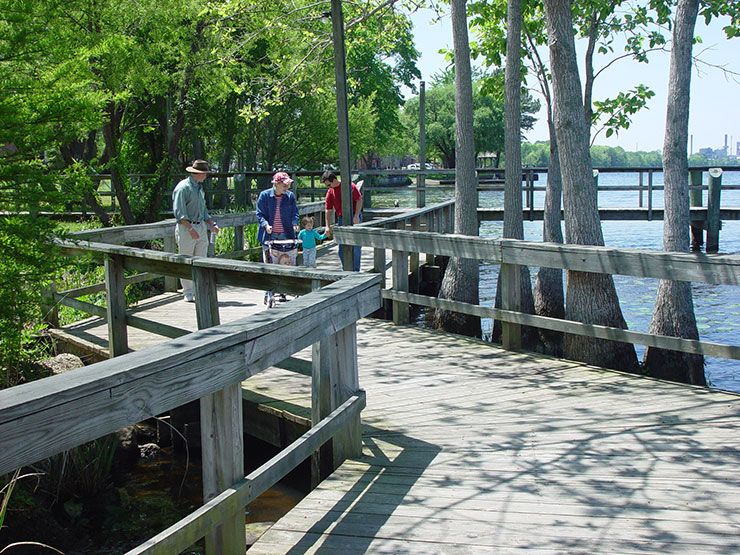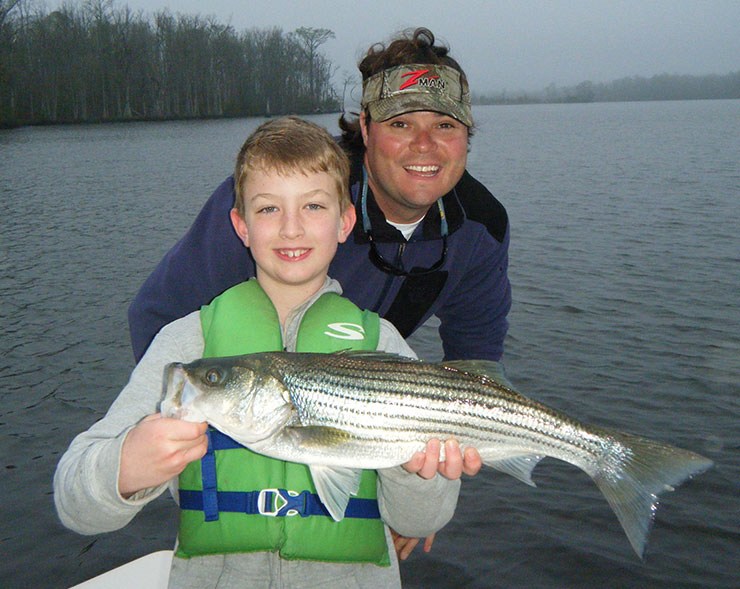NATURALIST’S NOTEBOOK: North Carolina’s Coastal Treasures

Anthony stepped off the school bus. He raised his head to view the North Carolina Museum of Natural Sciences. His science class with Mrs. Baker was about to discover more about the coast.
Anthony had moved from Colorado, so he was excited to learn about the beach. Today, he was going to find out about his classmates’ favorite place to visit.
“Alright class,” Mrs. Baker began, “Ready to go? Stay together!”
She opened one of the glass double doors. Anthony and his classmates filed in.
The first thing Anthony noticed was the biggest teeth he had ever seen. Next to it was a sign that read North Carolina Natural Treasures. Anthony stood in awe as his other classmates roamed about the gallery. He didn’t know a part of an animal could be so huge.
He pointed to it with interest and asked his teacher, “What is that?”
Mrs. Baker smiled at him and said, “That’s a model of the jaw of the white shark’s ancestor. They are most often called megalodon and they grew to be very large.”
Anthony made his way over to read the description.
“Megalodon grew to be 42 feet long!” Anthony exclaimed.
“Wow, that’s a little bit longer than our bus outside,” Maria, Anthony’s classmate, added.
“Good job, Maria!” Mrs. Baker added. “Comparing the measurements to something you see daily is a good way to get an idea of a creature’s size.”

Anthony was excited to learn more about animals. He walked around the displays until he found the eastern box turtle. The turtle’s eyes intrigued him.
“Its eyes are so red!” Anthony exclaimed. A museum volunteer noticed Anthony’s interest and walked over to him to explain.
“Well,” the volunteer began, “the males have bright red eyes, like this particular box turtle. The females have brown or yellow eyes.”
“How long do box turtles live?” Anthony asked.
“Typically 60 to 80 years. Sometimes, they can live more than 100 years,” the museum volunteer replied.
“Wow! That’s a long time,” Anthony said.
“It is quite amazing,” the volunteer agreed. “Another interesting fact is that all their shells have different patterns. Each one is unique. They also are found across the entire state.”
“Thanks for telling me,” Anthony replied. He had no idea how interesting turtles could be.
The volunteer smiled and said, “You are very welcome. Remember, you can always find more information about box turtles in your local library. It is the state reptile.”
Anthony nodded. His library card would certainly get more use now that he had discovered the megalodon and box turtle. He couldn’t wait to learn more about them.
Anthony smiled back and then followed his classmates to the next area of the museum, Coastal North Carolina.
COASTAL NORTH CAROLINA
Anthony noticed a tall and dry-looking plant next to the sign labeled Salt Marshes. Mrs. Baker walked over to Anthony and told him the plant is officially called Spartina, but is commonly referred to as smooth cordgrass.
“It looks so different from the grass in my yard,” Anthony stated.

“It is actually a plant that can grow to 8 feet and it stabilizes the soil it grows from with its matted roots,” Mrs. Baker noted. “When Spartina dies, it becomes detritus, which serves as food for many salt marsh species.”
“What’s that?” Maria questioned as she pointed to the salt marsh model. The exhibit also showed a U-shape under the mud with a tube-like creature inside the U.
“That’s a lugworm, young lady,” said a museum visitor. “They burrow under the mud in salt marshes.
When the tide goes out, if you ever see a depression in the sand with coils of mud nearby, that’s likely a lugworm.”
“The coiled mud is the waste that their body doesn’t need,” Mrs. Baker added.
Anthony listened closely. He would be sure to look for the depression in the mud once he went to a soundside beach.
Mrs. Baker thanked the visitor for helping. Then the class moved to the second floor of the museum.
DISCOVERY ROOM
Mrs. Baker led the class to the Discovery Room and everyone waited in line to enter. Anthony was anxious to see what this room had to offer. Finally, it was his turn.
Anthony walked to a corner of displays in the room. He saw a creature that had five limbs. Maria walked over and picked up the peculiar animal.
“It’s called a sea star, Anthony,” Maria said.
“Sea star? What does it do?” Anthony asked.
“I’m not sure,” Maria responded, “but it feels rough.” Maria made a dissatisfied face as she examined the star.
Norman, another classmate, came over and said, “That’s because it’s all dried out. I see those when I go to the beach. They are very squishy.”
Mrs. Baker overheard the conversation between her students.

She knelt down and turned over the sea star in Maria’s hands. “This is a margined sea star. Its tube feet are pointed and perfect for sticking in the sand. It uses its feet like poles to help it move.”
All three students felt the bottom of the sea star. Then, Mrs. Baker turned the sea star back over.
“See this circle on top? That is where water enters to help it move.”
Norman grabbed a book from the shelf about sea stars and started to search for margined sea stars.
“This also says that margined sea stars are one of the fastest types of sea stars!” he exclaimed.
“Impressive research skills, Norman,” Mrs. Baker noted. “Using books as a resource is helpful, isn’t it?” All three students nodded.
Anthony turned to see that his other classmates were looking at pull-out drawers with the help of a museum volunteer. Anthony decided to join them. To his delight, the box was full of information on sharks and it also included shark teeth.
“I get to touch the teeth?” Anthony asked.
“You certainly do,” the museum staff member replied.
Anthony felt excitement as he reached for the megalodon tooth. He was thrilled to touch something that belonged to such a powerful creature. It was smooth, but rough in some areas. The museum volunteer told him that was because the tooth was fossilized and it was millions of years old.
“What does fossilized mean?” Norman asked as he joined them.
“Fossilization occurs when something is covered in sediment for years. A tooth that fell to the ocean floor could have become covered by sediments and deprived of oxygen. Over a long period of time, minerals from the sediment eventually replaced the minerals in the teeth,” the volunteer explained.
“That’s awesome!” Norman replied with enthusiasm.
“Fossils of megalodon teeth are often found in fossil deposits in eastern North Carolina because the land was under water when the megalodon lived,” the volunteer added. “And divers also find them off our coast.”
Anthony imagined finding a megalodon tooth of his own.
“Time for lunch!” Mrs. Baker interjected. “Good. I could eat as much as a megalodon,” Norman added.
NATURALIST CENTER
After lunch, it was time to leave the main part of the museum. The class walked over to the Nature Research Center.
The class traveled to the second floor and entered the Naturalist Center. Once the students had watched a short video on how to take care of specimens in the room, Anthony was ready to look around.

A volunteer helped him with what was called a “magic table,” which was a touchscreen that showed pictures and descriptions of the animals.
“You can choose any animal with a tag,” the volunteer told him.
Anthony chose what he considered the most beautiful animal he had ever seen. The tag on its talon read barred owl. He carefully lifted it from the shelf. He couldn’t believe how soft it felt. The volunteer helped Anthony place the owl on the magic table.
The rest of Anthony’s classmates and Mrs. Baker gathered around the magic table. Together, the class went through slides of information on the barred owl. Anthony learned that it could prey on animals as big as rabbits.
“It got its name from the bar-like feather pattern on its chest. It is what distinguishes it from other owls in North Carolina,” the volunteer said.
“It’s gorgeous,” Maria stated.
Brandon, a museum curator, joined the group. “The sounds the barred owl makes are just as distinctive as their markings,” he noted.
Anthony pressed the button for the next slide on the magic table and everyone heard the famous and distinctive “hoo-hoo-to-hoo-oo, hoohoo to wha-aa” of the barred owl.
“Some people say the hoot sounds like the owl is crying ‘Who cooks for you? Who cooks for you all?’ ” Mrs. Baker added.
Anthony and his classmates listened with enthusiasm. They even mimicked the call.
“I’ve heard that sound before!” Norman exclaimed. “It came from the forest near my friend’s house. He lives at the coast.”
Maria pointed to the magic table and read from the display.
“It says here that barred owls live in forests near bodies of water,” she stated.
“Good observation and research skills Norman and Maria,” Mrs. Baker said.
After, Brandon helped Anthony place the barred owl back on its shelf.
“Time to visit the museum store.” Mrs. Baker said.
In the store, Anthony went straight to the book section, hoping to find a book on coastal animals and plants.
One day he would get the chance to visit the coast. Until then, Anthony intended to learn more about that fascinating place.
For more information on the North Carolina Museum of Natural Sciences and its Nature Research Center, visit: naturalsciences.org.
Find out more about North Carolina’s coastal animals and plants from North Carolina’s Amazing Coast, which will be published in 2013.
This article was published in the Autumn 2012 issue of Coastwatch.
For contact information and reprint requests, visit ncseagrant.ncsu.edu/coastwatch/contact/.
- Categories:


